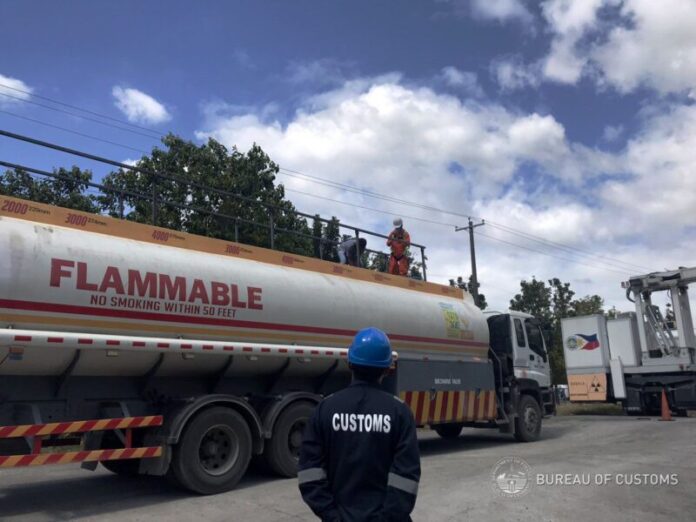-
Four more ports where imported petroleum products arriving in bulk can be offloaded in line with the government’s fuel marking program have been added by the Bureau of Customs
-
Customs Memorandum Order No. 04-2023 adds the ports of Aparri, San Fernando (La Union), Zamboanga, and Legaspi to the list of authorized ports where gasoline, diesel, and kerosene arriving in bulk can be discharged
-
BOC said petroleum products covered by CMO 43-2019 and imported in bulk should be discharged only at ports designated under the memo order
The Bureau of Customs (BOC) added four more ports where imported petroleum products arriving in bulk can be discharged in line with the government’s fuel marking program.
Customs Memorandum Order No. 04-2023, dated March 7 and signed by Customs Commissioner Bienvenido Rubio on March 13, amends CMO 43-2019 and adds the ports of Aparri, San Fernando (La Union), Zamboanga, and Legazpi to the list of authorized ports of discharge for gasoline, diesel, and kerosene arriving in bulk. The order took effect immediately.
CMO 43-2019 provides the implementing rules for BOC’s its fuel marking program pursuant to Joint Circular No. 01-2019, which, in turn, executes the mandatory marking of the petroleum products after taxes and duties have been paid.
The eight initial ports of discharge under CMO 43-2019 are Batangas, Limay, Subic, Davao, Cagayan de Oro, Cebu, Tacloban, and Iloilo ports.
The fuel products to be marked are refined, manufactured in the Philippines, or imported gasoline, diesel and kerosene, including those withdrawn from free zones to be introduced into the country.
Petroleum products covered by CMO 43-2019 and are imported in bulk should be offloaded only at ports of discharge identified on the memo order. The identification of such ports ensures that all imported petroleum products covered by CMO 43-2019 are accounted for and tax paid.
The addition of more ports of discharge has been recommended by the Project Implementation Office (PIO) of the fuel marking program and is pursuant to CMO 43-2019, which states that the Customs commissioner may include other ports of discharge at the recommendation of the PIO.
Implementation of the fuel marking program is among the key provisions of Republic Act 10963, or the Tax Reform for Acceleration and Inclusion (TRAIN) Law. Marking fuel products, whether imported or manufactured in the Philippines, became mandatory five years after the TRAIN Law took effect on January 2018.
Fuel marking aims to curb oil smuggling and plug revenue losses arising from the illegal importation or misdeclaration of petroleum products.
According to BOC’s 2022 accomplishment report, a total of 51.11 billion liters of fuel had been marked from January 1, 2020 to December 31, 2022. The government had also collected P835.97 billion of duties and taxes from 2020 to 2022 under the fuel marking program. – Roumina Pablo
RELATED READ: Fuel marking brings government revenues of P453B





